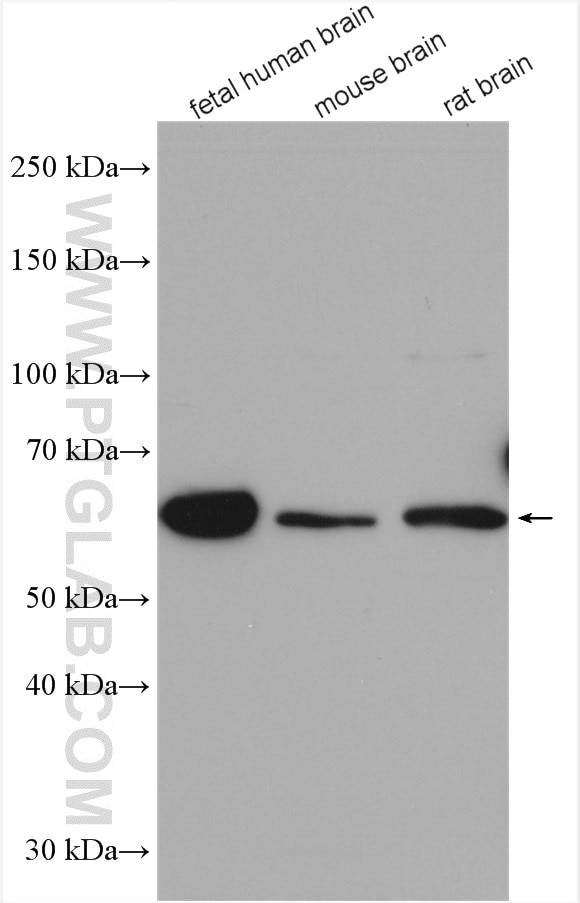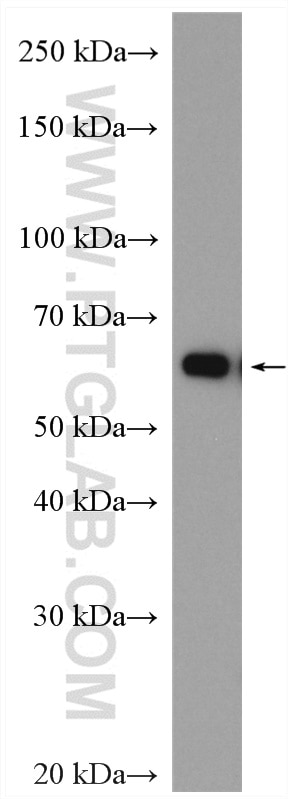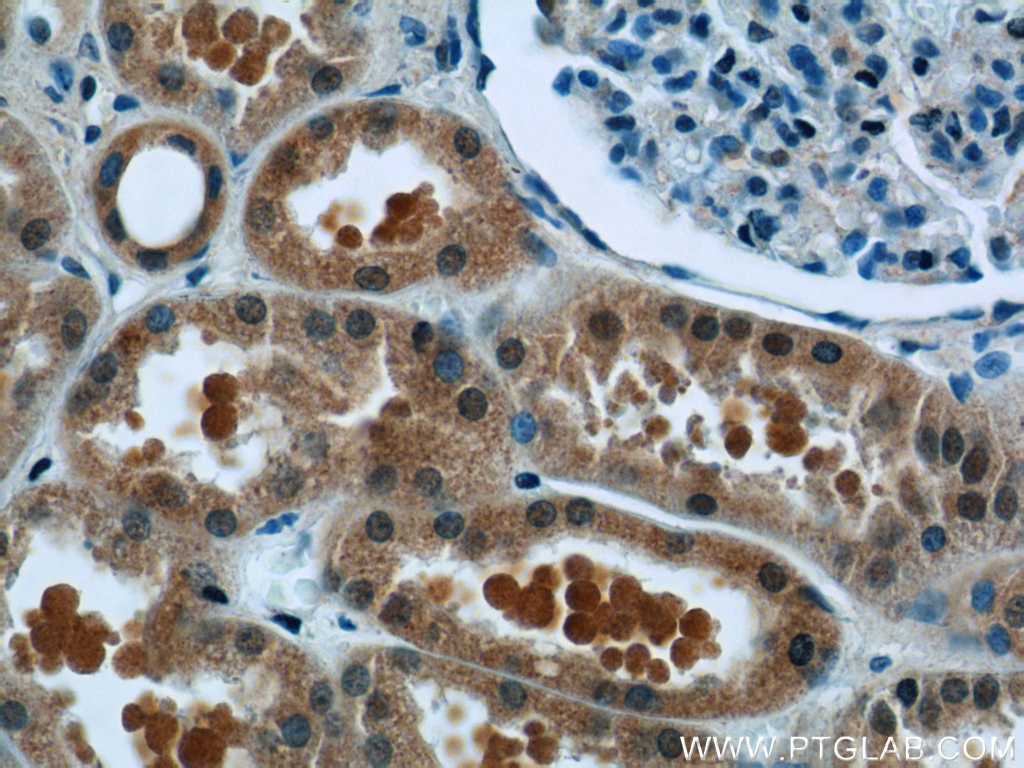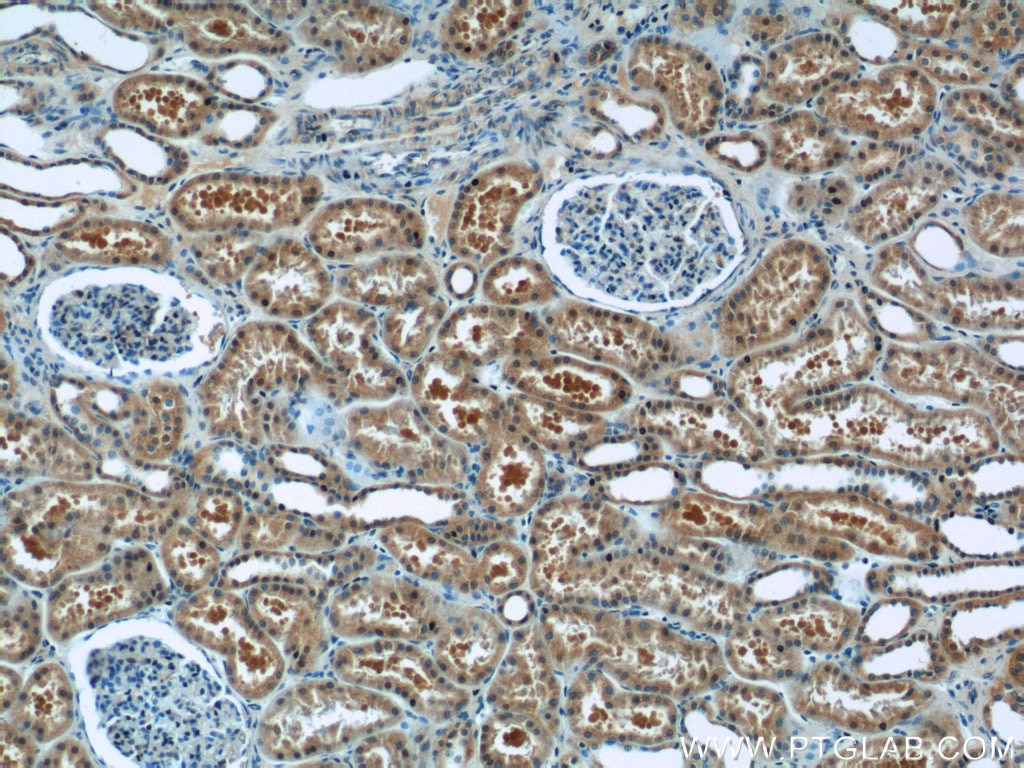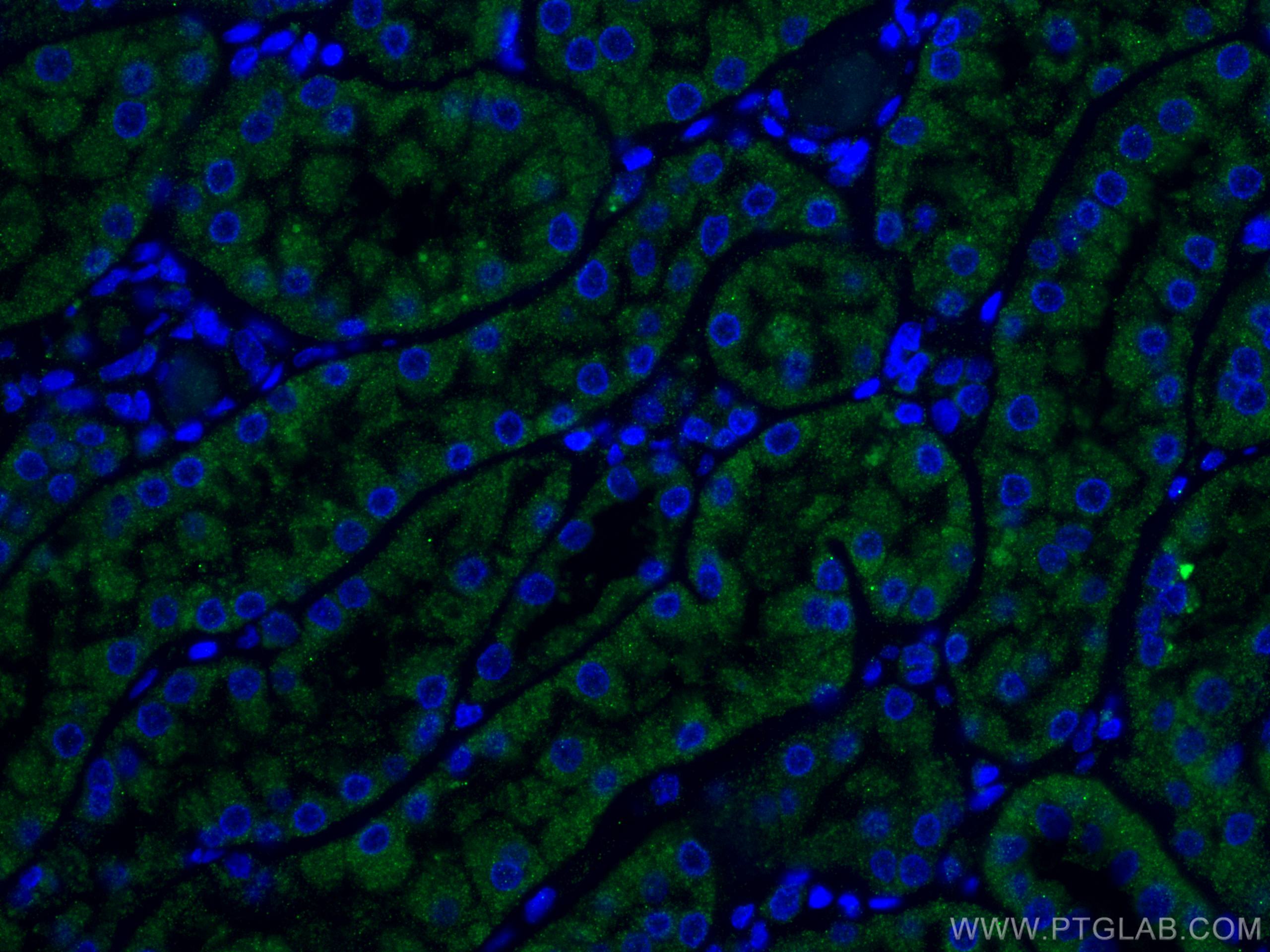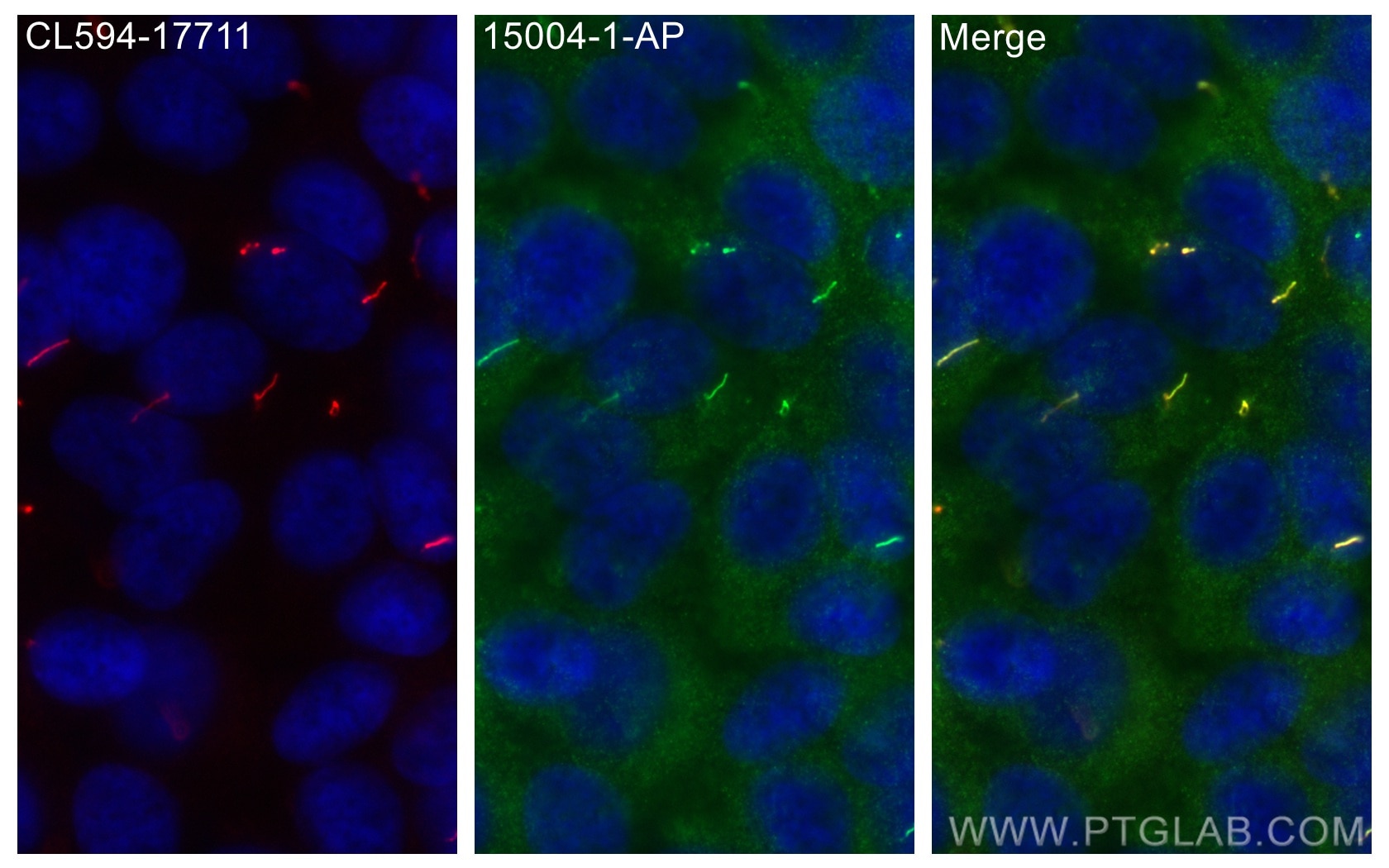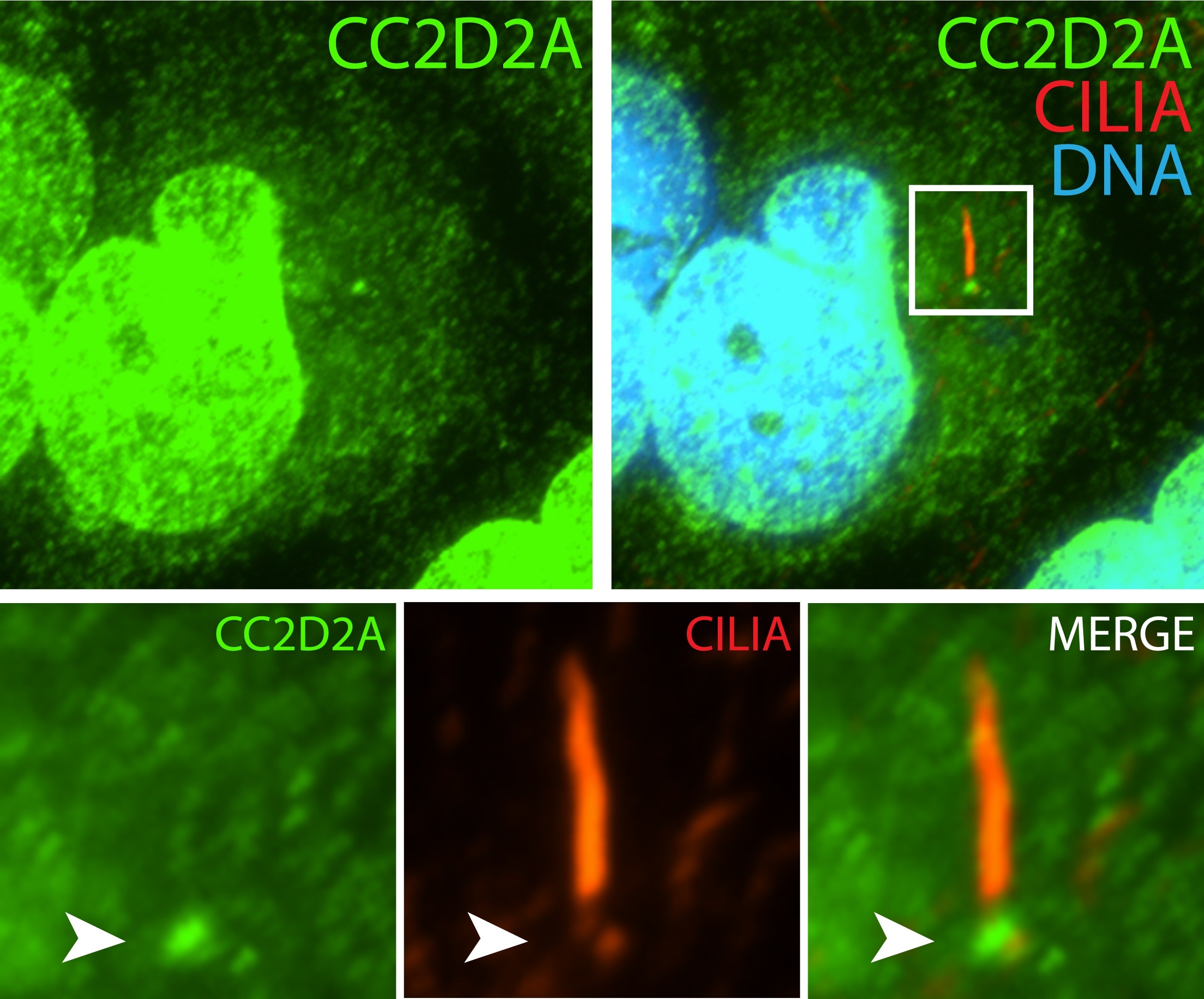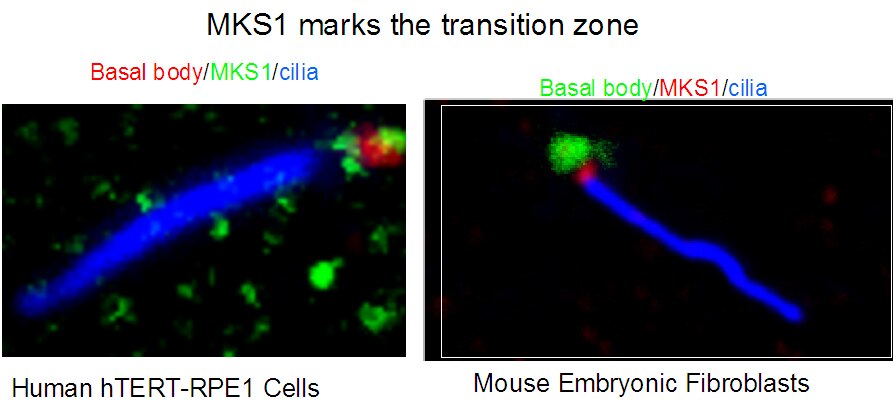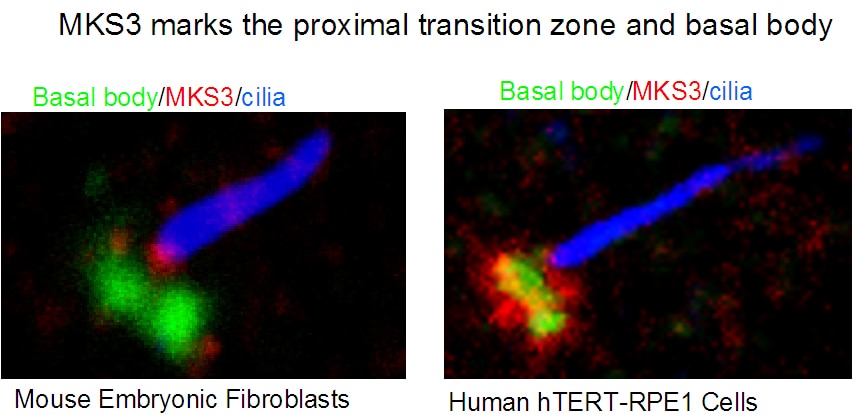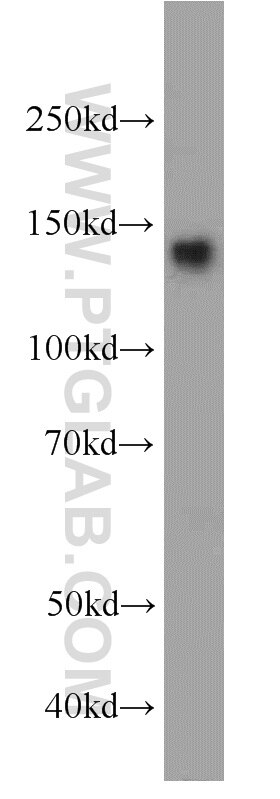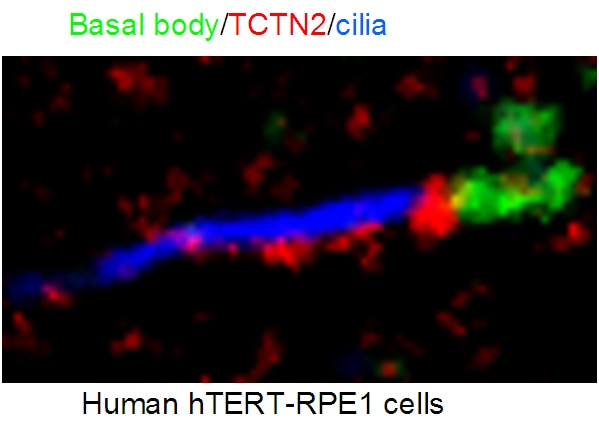Anticorps Polyclonal de lapin anti-TCTN1
TCTN1 Polyclonal Antibody for WB, IHC, IF/ICC, IF-P, ELISA
Hôte / Isotype
Lapin / IgG
Réactivité testée
Humain, rat, souris et plus (1)
Applications
WB, IHC, IF/ICC, IF-P, ELISA
Conjugaison
Non conjugué
N° de cat : 15004-1-AP
Synonymes
Galerie de données de validation
Applications testées
| Résultats positifs en WB | tissu cérébral humain fœtal, tissu cérébral de rat, tissu cérébral de souris |
| Résultats positifs en IHC | tissu rénal humain il est suggéré de démasquer l'antigène avec un tampon de TE buffer pH 9.0; (*) À défaut, 'le démasquage de l'antigène peut être 'effectué avec un tampon citrate pH 6,0. |
| Résultats positifs en IF-P | tissu rénal humain, cellules hTERT-RPE1 |
| Résultats positifs en IF/ICC | cellules hTERT-RPE1, |
Dilution recommandée
| Application | Dilution |
|---|---|
| Western Blot (WB) | WB : 1:500-1:1000 |
| Immunohistochimie (IHC) | IHC : 1:20-1:200 |
| Immunofluorescence (IF)-P | IF-P : 1:200-1:500 |
| Immunofluorescence (IF)/ICC | IF/ICC : 1:200-1:800 |
| It is recommended that this reagent should be titrated in each testing system to obtain optimal results. | |
| Sample-dependent, check data in validation data gallery | |
Applications publiées
| WB | See 4 publications below |
| IF | See 22 publications below |
Informations sur le produit
15004-1-AP cible TCTN1 dans les applications de WB, IHC, IF/ICC, IF-P, ELISA et montre une réactivité avec des échantillons Humain, rat, souris
| Réactivité | Humain, rat, souris |
| Réactivité citée | Humain, poisson-zèbre, souris |
| Hôte / Isotype | Lapin / IgG |
| Clonalité | Polyclonal |
| Type | Anticorps |
| Immunogène | TCTN1 Protéine recombinante Ag6099 |
| Nom complet | tectonic family member 1 |
| Masse moléculaire calculée | 64 kDa |
| Poids moléculaire observé | 55-64 kDa |
| Numéro d’acquisition GenBank | BC062611 |
| Symbole du gène | TCTN1 |
| Identification du gène (NCBI) | 79600 |
| Conjugaison | Non conjugué |
| Forme | Liquide |
| Méthode de purification | Purification par affinité contre l'antigène |
| Tampon de stockage | PBS avec azoture de sodium à 0,02 % et glycérol à 50 % pH 7,3 |
| Conditions de stockage | Stocker à -20°C. Stable pendant un an après l'expédition. L'aliquotage n'est pas nécessaire pour le stockage à -20oC Les 20ul contiennent 0,1% de BSA. |
Informations générales
Tectonic-1, encoded by TCTN1 (TECT1) gene, belongs to the tectonic family of secreted and transmembrane proteins. Tectonic-1 is a component of the tectonic-like complex, a complex localized at the transition zone of primary cilia and acting as a barrier that prevents diffusion of transmembrane proteins between the cilia and plasma membranes. Multiple transcript variants encoding different isoforms have been found for this gene. Defects in TCTN1 are the cause of Joubert syndrome type 13 (JBTS13), a disorder presenting with cerebellar ataxia, oculomotor apraxia, hypotonia, neonatal breathing abnormalities and psychomotor delay.During neural tube development, mouse Tectonic is required for formation of the most ventral cell types and for full Hedgehog (Hh) pathway activation. Epistasis analyses reveal that Tectonic modulates Hh signal transduction downstream of Smoothened (Smo) and Rab23.
Protocole
| Product Specific Protocols | |
|---|---|
| WB protocol for TCTN1 antibody 15004-1-AP | Download protocol |
| IHC protocol for TCTN1 antibody 15004-1-AP | Download protocol |
| IF protocol for TCTN1 antibody 15004-1-AP | Download protocol |
| Standard Protocols | |
|---|---|
| Click here to view our Standard Protocols |
Publications
| Species | Application | Title |
|---|---|---|
Nat Genet A transition zone complex regulates mammalian ciliogenesis and ciliary membrane composition. | ||
Nat Genet Mutations in DZIP1L, which encodes a ciliary-transition-zone protein, cause autosomal recessive polycystic kidney disease. | ||
Nat Cell Biol A ciliopathy complex at the transition zone protects the cilia as a privileged membrane domain. | ||
Nat Cell Biol CEP162 is an axoneme-recognition protein promoting ciliary transition zone assembly at the cilia base. | ||
Sci Adv Ciliopathy protein HYLS1 coordinates the biogenesis and signaling of primary cilia by activating the ciliary lipid kinase PIPKIγ. | ||
Nat Commun Microtubule asters anchored by FSD1 control axoneme assembly and ciliogenesis. |
